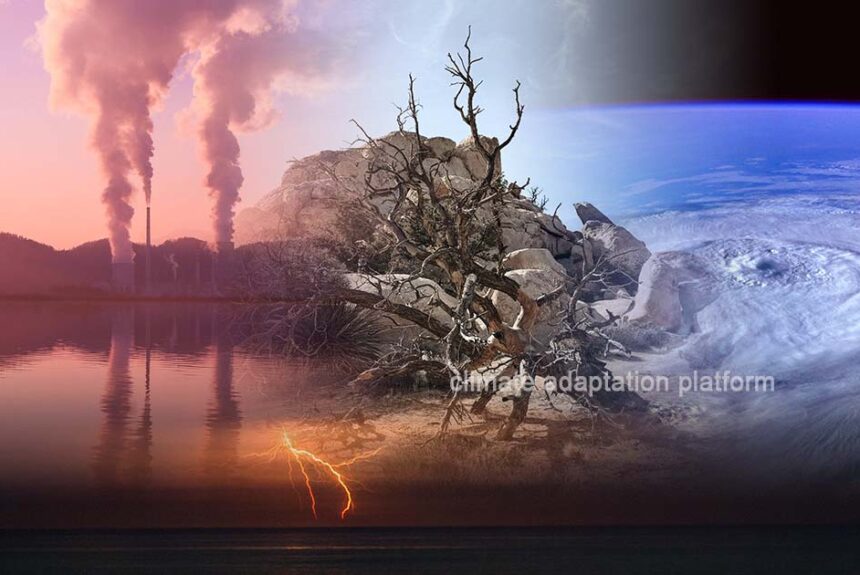The American Southwest has long been defined by its dramatic landscapes, scorching summers, and scarce water resources. Yet, what began as heavy rainfall in the 1980s has now shifted into decades of persistent drought, reshaping ecosystems, agriculture, and daily life.
Scientists and policymakers are urgently asking: what is fueling these extended dry spells? Is it simply the cyclical nature of El Niño and La Niña, or is human-driven climate change rewriting the region’s rainfall patterns? Recent research sheds new light on the forces behind these droughts—and what it means for the future of water security.
The Role of Climate Change and Aerosols in Shaping Rainfall
A study published in Nature Geoscience in July 2025 found that aerosols, or air pollution, and climate change directly affect precipitation patterns in the southwestern states, and it predicts that drought conditions will likely continue with increasing temperatures.
While the authors attribute this lack of rainfall in these parts of the US to La Niña-like conditions or the cooling of the Pacific Ocean’s surface temperatures, their analysis shows that even if the El Niño-like conditions persist, the Southwestern states will not experience an increase in rainfall.
The study is the first to separate the anthropogenic climate change and air pollution variables, showing how they directly influence rainfall patterns in the Southwestern states.
Teleconnections, Pacific Circulation, and External Influences
The low precipitation is caused by shifts in what the authors term a “teleconnection”, or the connection between the weather in the tropical Pacific and the U.S.
They found a significant shift in the teleconnection spans caused by the Pacific Ocean, which was influenced by aerosols or air pollution from vehicles and industries emitted by China and other East Asian countries, as well as historical climate change. This external influence is causing a circulation change that spans the Pacific Ocean, so that the expected effects of the El Niño-Southern Oscillation (ENSO), a recurring climate pattern, do not occur as expected.
Although East Asia is seeing a decline in vehicle and industrial emissions due to air quality regulations, the warming trend is expected to persist and may not counteract these positive gains. This means that the Southwestern United States is likely to continue facing low precipitation and drought conditions in the future.
Climate Adaptation Strategies to Drought and Low Rainfall
With the Southwestern states expected to experience more persistent droughts and lower precipitation levels in the future, Indiana University’s Environmental Resilience Institute offers the following climate adaptation solutions for regions in the United States and other countries susceptible to droughts and dry conditions. These adaptation strategies include:
Build the necessary infrastructure for aquifer storage and recovery. This includes increasing groundwater storage capacity to promote recharge when there is an excess of surface water flows. Diversity water supply options – from surface water, groundwater, from desalination plants, or establishing water trading with other utilities.
Increase system efficiency. This includes investing in the recycling of grey water and applying optimal use of both surface and groundwater – utilities may store excess water in wet years and withdraw this during dry periods. This may require investing in percolation basins and injection wells.
Model climate risks. Develop models to understand potential water quality changes, for example, higher water temperatures can lead to excess algal growth and eutrophication, or storm events can increase sedimentation, which can compromise water quality. These risks could be addressed with targeted watershed management.
Modify water demand. Encourage and support practices to reduce water use at local power plants, as the US electricity sector is the country’s largest water user, compared to other industries. They can reduce water consumption by using reclaimed water or by using a closed-loop water circulation system. The agriculture sector represents the second-largest user of water in the United States. The application of drip irrigation can reduce water usage.
Repair and Retrofit Facilities. This includes implementing saltwater intrusion barriers and aquifer recharge. Sea level rise can lead to saltwater intrusion into coastal aquifers, resulting in higher treatment costs. The injection of fresh water into aquifers can act as a barrier, while intrusion recharges groundwater resources.
Facing the Future of a Drier Southwest
The findings from the latest research are clear: while natural climate patterns like El Niño and La Niña continue to play a role, human activity—through both greenhouse gas emissions and air pollution—has fundamentally altered precipitation in the Southwest. These changes underscore a sobering reality: drought is not a temporary challenge but a long-term condition that demands adaptation.
By investing in resilient water systems, improving efficiency, and rethinking demand across sectors, communities in the Southwest can better prepare for the dry decades ahead. The time to act is now, before dwindling rainfall and rising temperatures place even greater strain on already fragile resources.
Sources:
Kuo, Y., Lehner, F., Simpson, I. R., Deser, C., Phillips, A. S., Newman, M., Shin, S., Wong, S., & Arblaster, J. M. (2025). Recent southwestern US drought exacerbated by anthropogenic aerosols and tropical ocean warming. Nature Geoscience, 1-8. https://doi.org/10.1038/s41561-025-01728-x
Hayes, C. (2025, July 9). Climate change and aerosols drive persistent drought and lower rainfall in Southwest, study finds. Phys.Org. Retrieved from https://phys.org/news/2025-07-climate-aerosols-persistent-drought-rainfall.html
Adaptation strategies for drought. (2025). Environmental Resilience Institute. Retrieved from https://eri.iu.edu/erit/strategies/drought.html



Leave a Reply